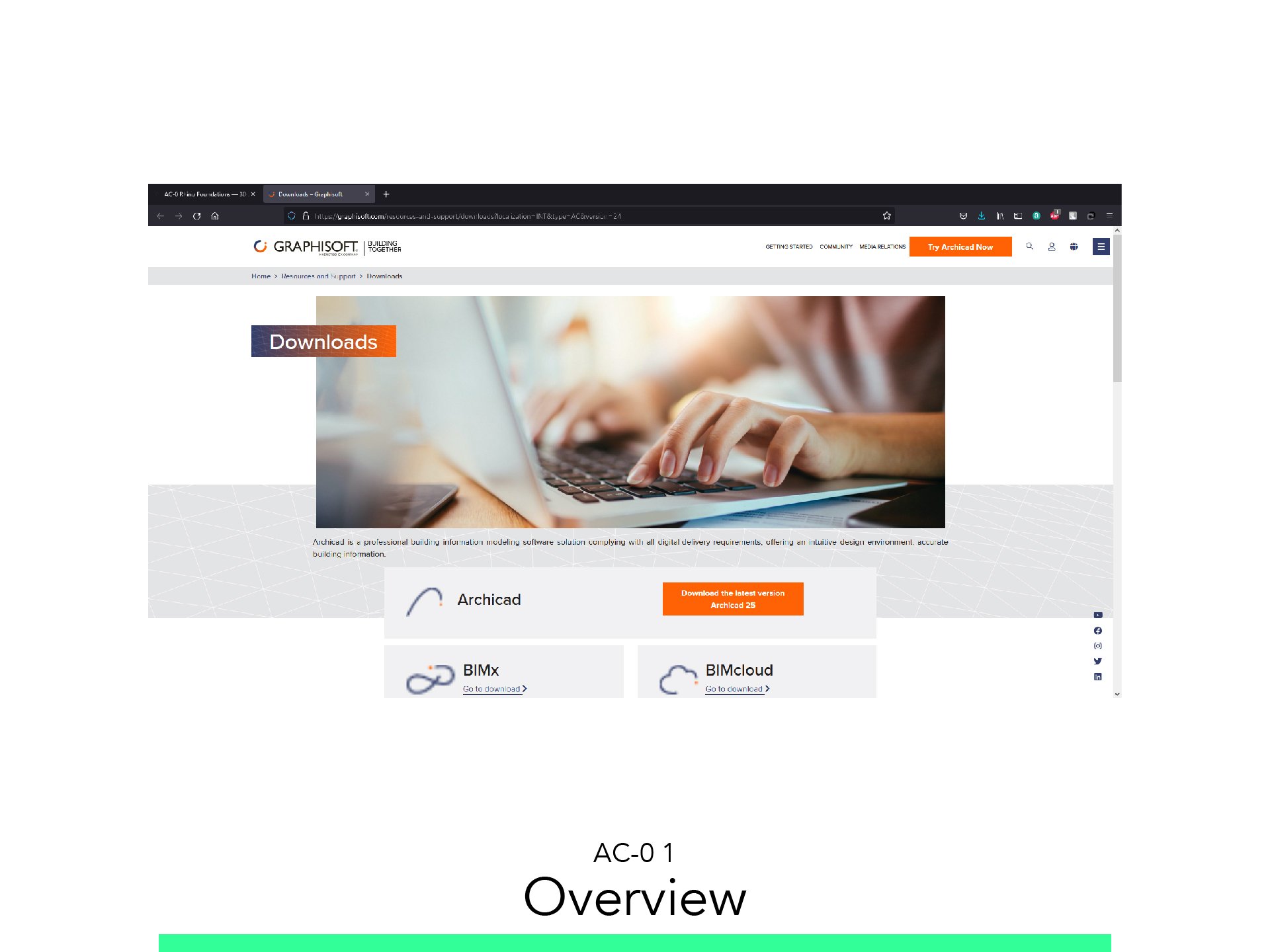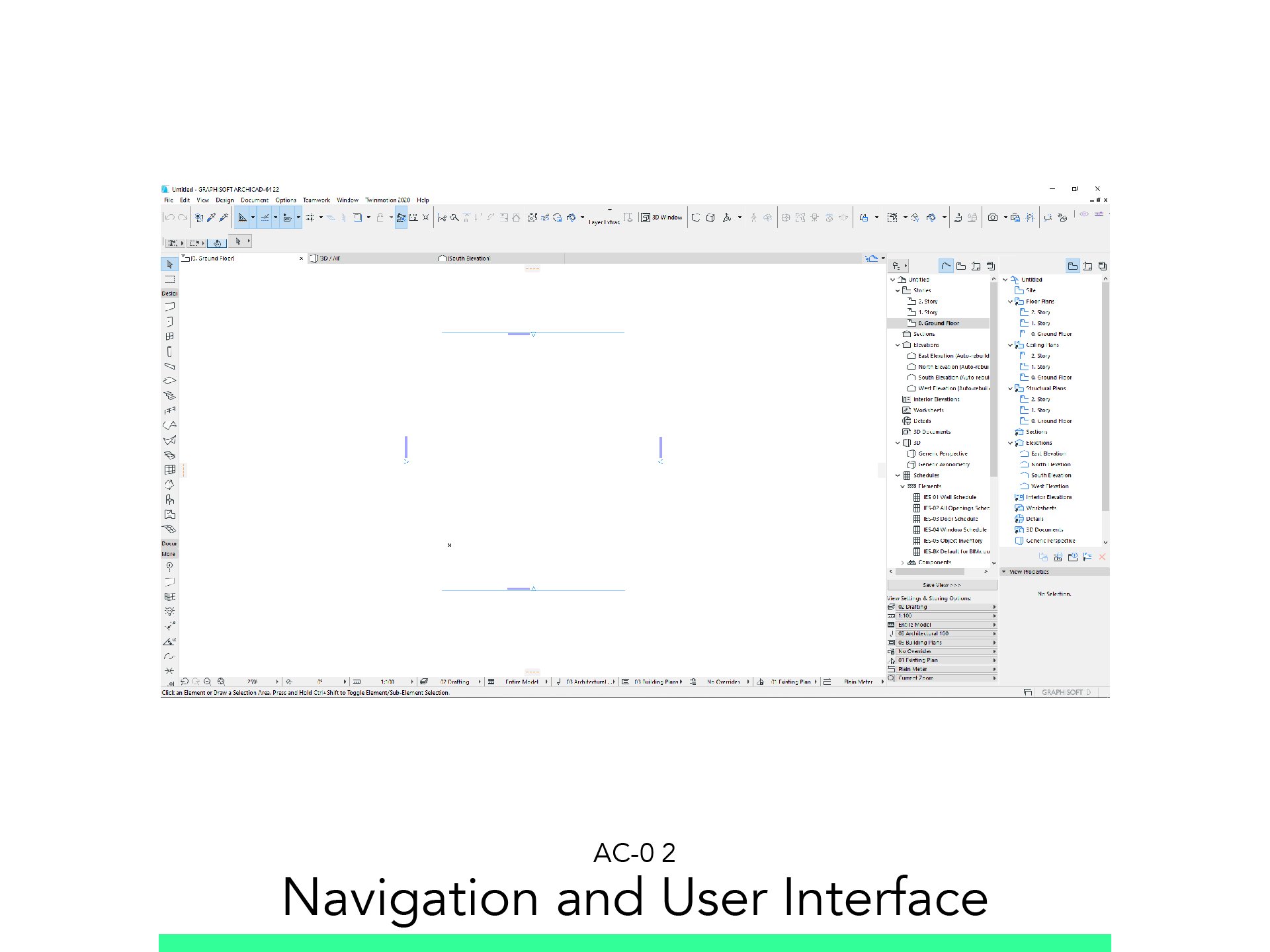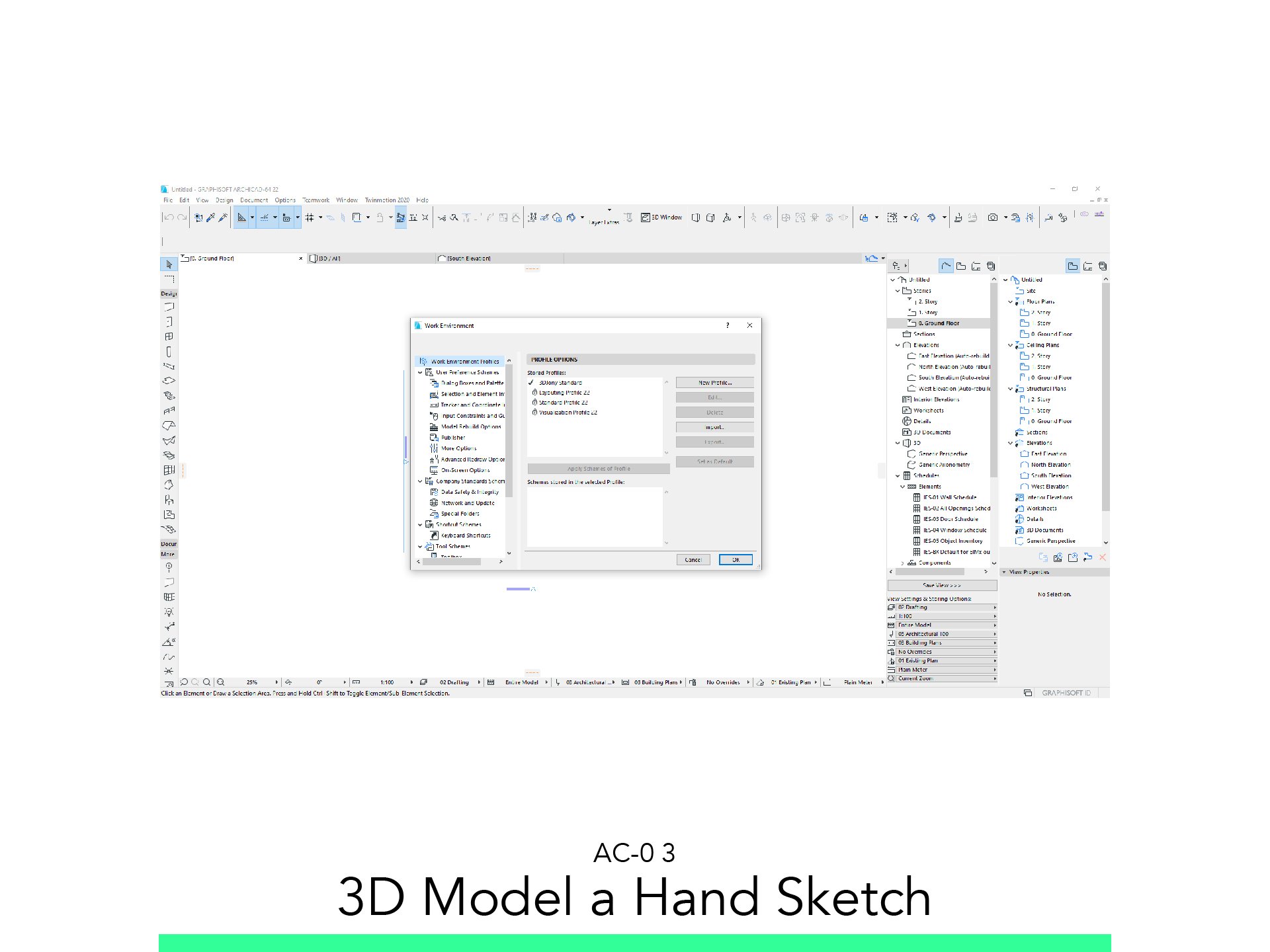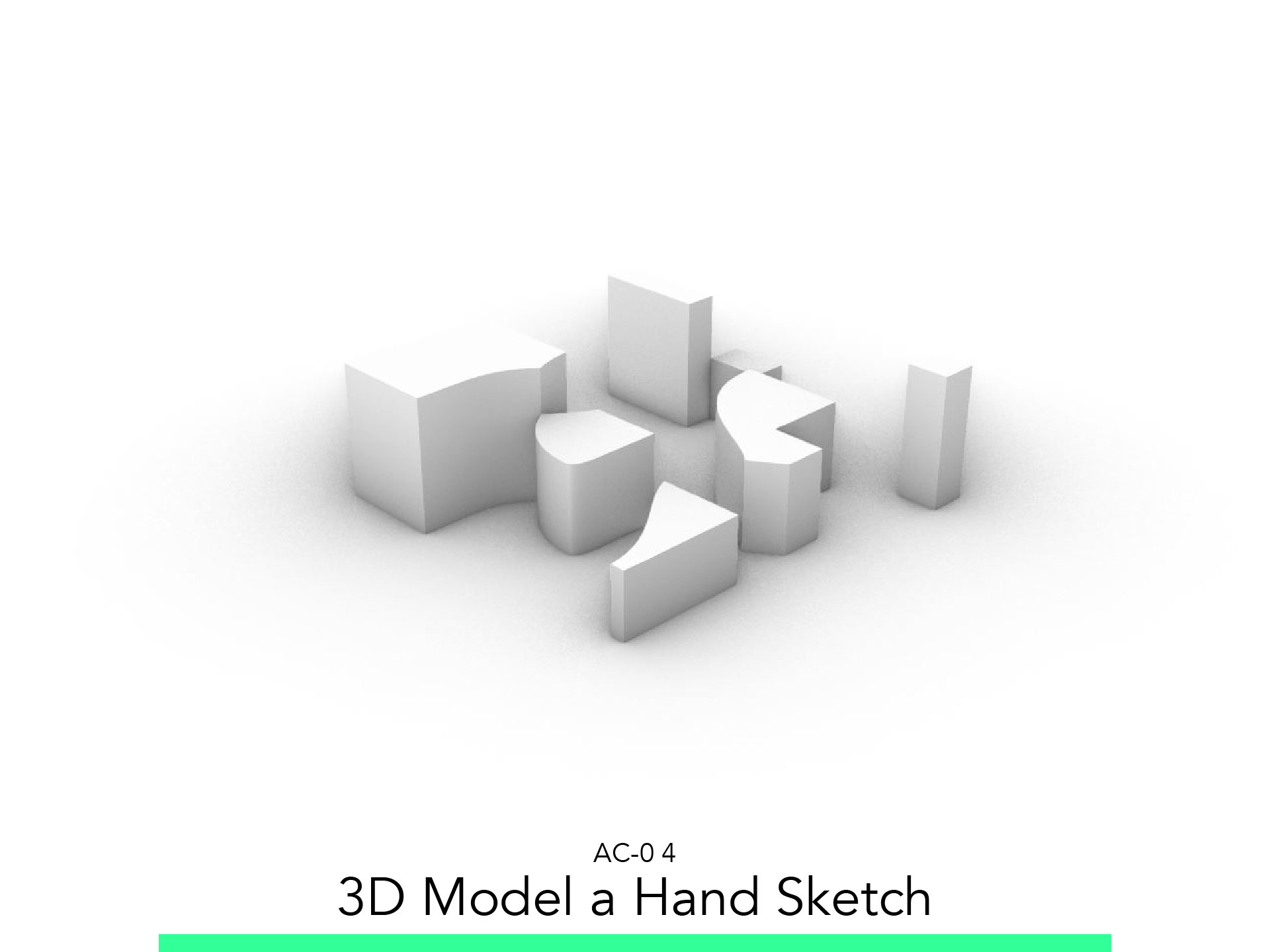AC-0 ArchiCAD Foundations
About this Tutorial
This course is intended for first time ArchiCAD users and/or modeling as subject. Self-taught users can also profit from these structures to consolidate essential concepts. You will find step-by-step explanations while allowing time for exploring the software with me, this way gaining the first experience with its user interface. We will spend a lot of time just looking and discovering ArchiCAD’s interface. Finally we will import a hand sketch and model it: a foundational skill essential for every architect.
Skill level and duration
Level: First Time Users
Duration: Half an afternoon
In this tutorial you will learn
Overview
Navigation and User Interface
Workspace Setup
3D Model a Hand Sketch
The materials you will need
Your Laptop and an active internet connection to download the software.
Download course exercises
Tutorial content
• 4 Videos
• Full Tutorial Script
• ArchiCAD Native Files for Following the exercise
• ArchiCAD Template File
Why take this tutorial
ArchiCAD is an incredibly versatile and widely used BIM software. Here you will have your first taste of the program, this will be useful to later start practicing and learning about the tools, skills and tips found in ArchiCAD. Learn about the interface and the navigation, understand the configuration of the workspace and then finally take a risk modeling a hand sketch. You will find all of this is super useful for an architect.
1. Overview
Download a AchiCAD license or trial program for Mac or Windows.
2. Navigation and User Interface
2.1. Start Window
New Project.
You can Browse a existing project.
Or enter a shared Teamwork Project.
Template: ArchiCAD 24.
Profile: Default
2.2. Where everything is
Left Bar of Toolbox.
Top Bar of Object Settings.
Favorites List of Prepared Tools.
General Buttons.
Find & Select
Pick Parameters
Snap Button
3D Cutaway.
Layer Settings Selections.
General Menu.
2.3. Project, View and Layout Map
Navigator.
Project Map.
Stories.
Sections.
Elevations.
Workseets.
3D
View Map.
Save Current View.
Layout.
Export.
2.4. 3D Objects vs. 2D Objects
Be careful to difference between the objects you create and if you are going to see them in 3D view. There are only few elements in 2D you are going to visualize in 3D view and BIM views, the rest is only 3Dimensional objects. When you are drawing in 2D you are creating only in the view you are drawing, the 3D objects are the only ones you can visualize in all the BIM complexity.
2.5. Navigation
To Zoom in and out: Scroll Mouse Wheel
To Pan: Click Mouse Wheel
To Orbit: Shift + Click Mouse Wheel
To Change View: Active Tab or Navigator
To Select Any near Object: Active Quick Selection
To Edit Selection Shape: Geometry Methods
To Change Selection Method: Selection Method
3. Setup Workspace
*Who doesn’t want to set Work Environment manually skip to chapter Import Work Environment (3.6).
3.1. Buttons
Go to Window > Toolbars > Toolbars
Edit Toolbar Standard.
Organize Commands by All commands in alphabetical order.
Search and Add commands:
Show/Hide Layers
Lock/Unlock Layers
Hide selections
Lock Selections
Hide Others
Lock Others
Undo Layer Change
Redo Layer Change
Add Separator
Go Down a Story
Go Up a Story
Go to Story
Add Separator
True Line Weight
Wall & Beam Reference Lines
Drawing Frames
Bold Cut Lines
Remove Gravity from Standard
3.2. Organizer
Open the top left Button over the Navigator.
Select Show Organizer.
Take out of the side the Navigator and delete.
Fit the Organizer on the right side.
3.3. Trace Reference
Trace Reference
You can Find the command in View > Trace Reference
Or set the Toolbar in Window > Toolbars > Standard
Its fundamental to keep this tool in hand, it’s going to be of great use in these exercises and in general for the work of architecture in BIM ArchiCAD
3.4. Adjust Working Units
Go to Menu > Working Units.
Select Meter
Adjust Decimals to: 2
Accept and Exit.
3.5. Save Work Environment
Work Environment
To find these options go to Options (ARCHICAD in Mac) > Work Environment
Go to Work Environment Profiles and select New Profile…
Profile Name: 3DJony Standard.
User Preferences Schemes: Custom.
Tool Schemes: Custom.
Workspace Schemes: Custom.
Command Layout Schemes: Custom.
Change Shortcut Schemes > Keyboard Shortcuts
List: Current Menu Structure
Design > Solid Element Operations
Click here and press desired: Ctrl (Cmmd) + Shift + X
Export…
3.6. Import Work Environment
Start with ArchiCAD Template.
Go to Menu > Work Environment.
Select Import.
Browse for Downloaded folder: AC-0 Learning Materials.
Accept.
Pick Folder AC-0_1.
Apply and set as Default.
Accept and Exit.
4. 3D Model a Hand Sketch
4.1. Import and Scale
Create a New Worksheet
Adjust Scale to: 1:100
Drag and Drop the PDF Ground Floor
Move it near the Point 0
Resize JPEG: Ctrl + K
To Measure: M
4.2. Trace Reference
To Save View: ViewMap > SaveCurrentView
From the Model Views/Ground Floor: Right Click
Select Worksheet Show as Trace Reference
Move the PDF to place Drawing between Elevation Markers
4.3. Morph
From the Toolbar start: Morph
Draw the contours
To Close Polygon: Hammer Cursor Icon
To Draw Curve: Pet Palette Options
3 Point Arc
To Reference a far point. Activate Snap Guide
To Draw a Rectangle > Geometry Method Rectangular
4.3. Extrusion
Go to 3D View.
To extrude: Pet Palette > Push & Pull
Snap to make the same height as other volume
To Add a vertex: Pet Palette (PP) > Add Dot
To Make a Curve: PP > Arc Point
To Fillet or Chamfer PP > Fillet & Chamfer Edge
To add Points: PP > Sketch Pen
To Create a Door PP > Push & Pull
4.4. Export STL
What you see in 3D is what you Export
To Show only selected: F5
Go to File > Save As
Select formal“STL Stereolithography
Save Format: Date_Description_Scale
Set Scale.
Save





















Model in ArchiCAD for the absolute first time with me!
Let me teach you basic commands of the software for you to be ready work on your projects. Start from the very basics and follow me step-by-step in the process of giving more detail to your architectural model.